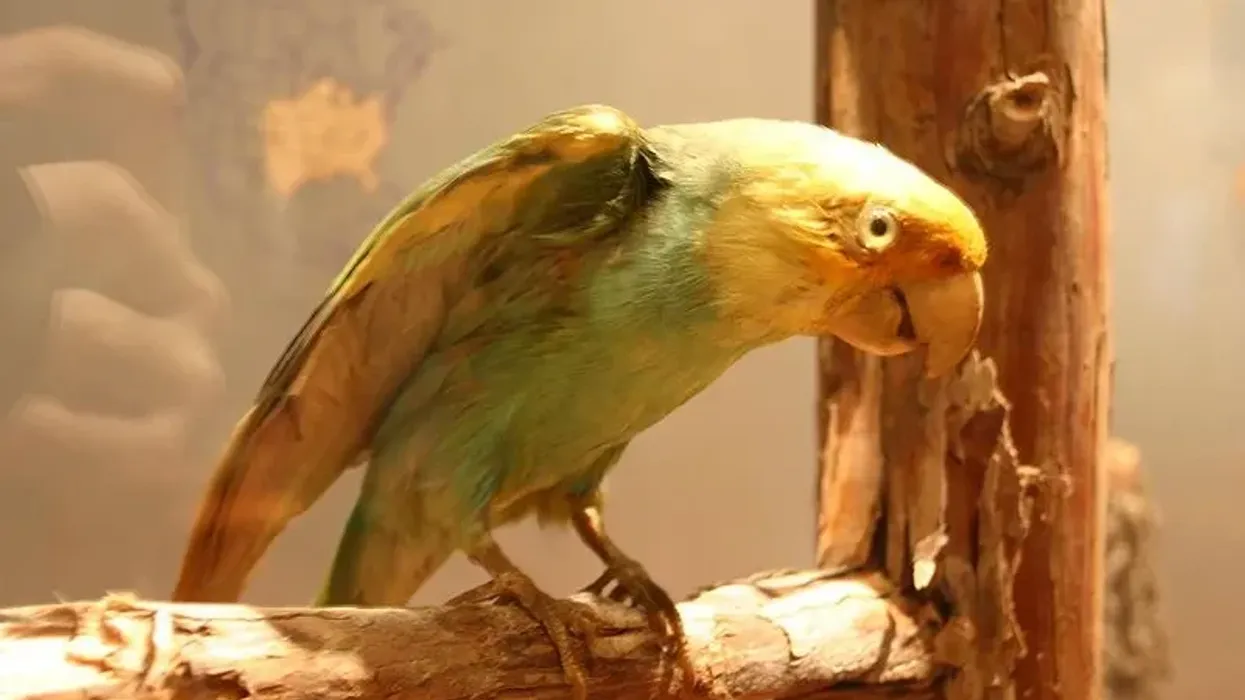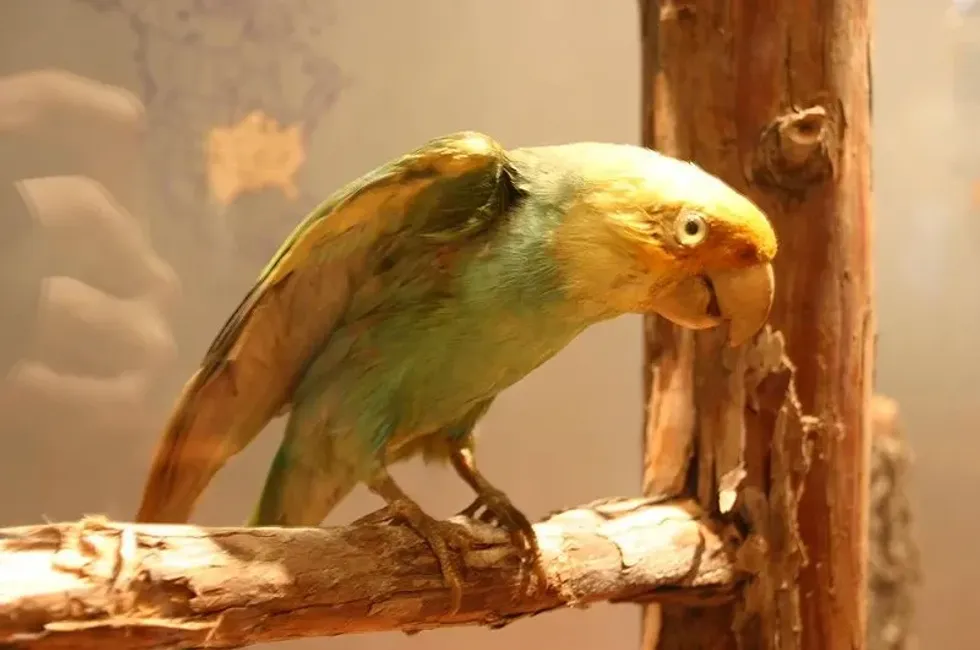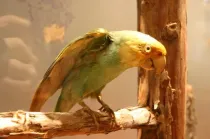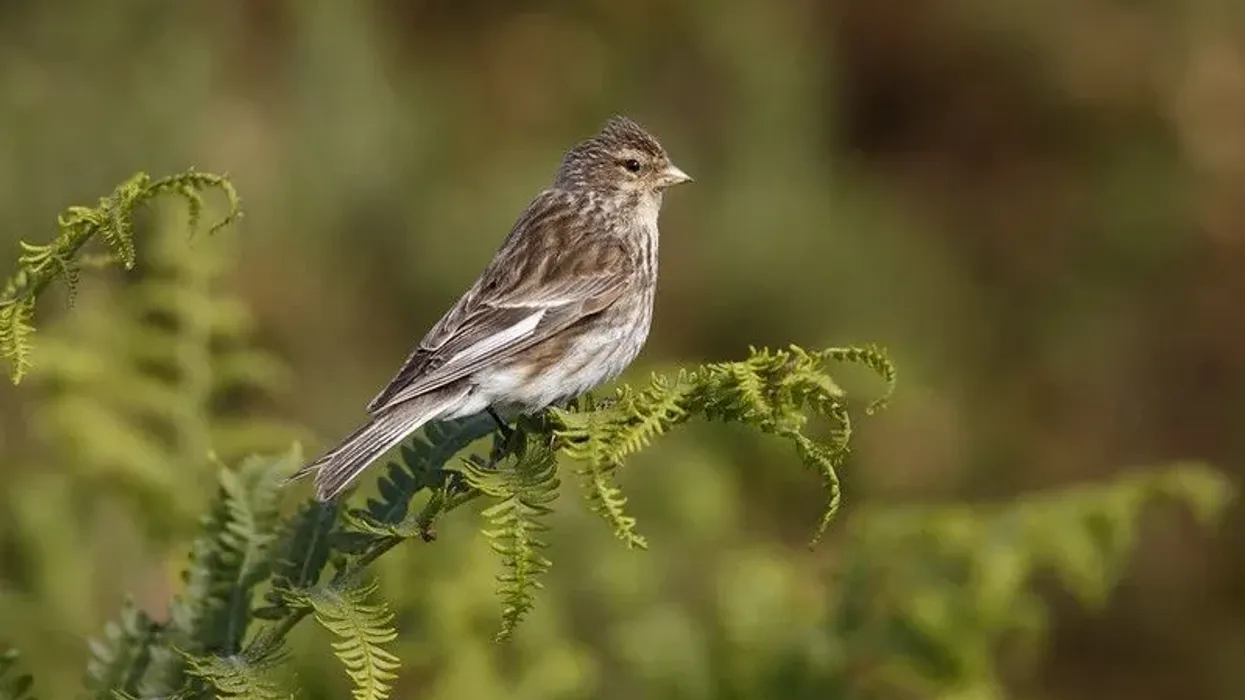One of the most remarkable birds that saw its extinction in the 1900s is the Carolina Parakeets.
This species was the only one native to North America and was well known for its colorful feathers, and gamut of hues (yellow, green, red). They lived in flocks in the wild and in pairs when in captivity (such as in the Cincinnati Zoo).
They were present in various parts of the country, such as South Carolina, Far West Texas, and the north of Florida, as well as various other locations in the south, north, and the eastern United States.
One of the most interesting facts about the Carolina Parakeet is that the last of these birds died out from the wild in 1904, and the last Carolina Parakeet which was in captivity died in 1918, just one year after his mate, Lady Jane, passed away.
Though the IUCN Red list certified the extinction of this species back in 1920, it took the American Ornithologts' Association an entire decade more, and they finally relented in 1930.
The reason for this delay was that many claimed a sighting of this bird (usually around North and West America), but there was no proof to support it.
Read on for Carolina Parakeet important facts, and check out more birds facts in our galah and great green macaw articles.
Carolina Parakeet Interesting Facts
What type of animal is a Carolina Parakeet?
The Carolina Parakeets (Conuropsis carolinensis) were a type of bird.
What class of animal does a Carolina Parakeet belong to?
The Carolina Parakeets (Conuropsis carolinensis) belonged to the bird class
How many Carolina Parakeets are there in the world?
The population of the Carolina Parakeets in the world is zero since they were driven to extinction in the 1910s.
Where does a Carolina Parakeet live?
The Carolina Parakeets used to live in wetlands and swamps until they died out in the early 1900s.
What is a Carolina Parakeet's habitat?
The Carolina Parakeets used to live in the wetlands and swamps of North America. They preferred to set up nesting sites in the hollow sycamore trees. They were found from Southern New England to places like the Eastern United States and states like Florida.
Who do Carolina Parakeets live with?
The Carolina Parakeets were highly social animals and lived in large, noisy flocks of 200-300 individuals. These flocks usually made their nests in the hollows of trees like the sycamore and were well suited to communal living.
How long does a Carolina Parakeet live?
The Carolina Parakeets used to live up to 35 years in the wild. In captivity, their life span declined a lot. Despite some effort to save them, this native American species died out all over the country, and as such, all over the world.
How do they reproduce?
Like all other birds, the Carolina Parakeets used to mate, after which the female would lay a clutch of one to four eggs. They had a high hatching rate, and the couples used to form strong bonds and mate for life.
What is their conservation status?
The Carolina Parakeets have been marked as Extinct by the IUCN Red List. The last known of these birds in the wild was killed in Florida in 1904. The last known captive bird named Incas passed away in the Cincinnati Zoo in 1918, thus marking this species into extinction in the early 20th century.
Carolina Parakeet Fun Facts
What do Carolina Parakeets look like?
This native American bird was primarily green, yellow, and red/orange in color. Most of their bodies were darker green, with lighter shades in their underbelly.
Their necks and tops of their wings were usually yellow, and the area around their beaks and eyes used to be red/orange. They were a small bird with sharp claws and a moderately hooked beak.
How cute are they?
They were adorable indeed! The Carolina Parakeets used to be a very colorful parrot bird species, and so, anyone would have found their population and feathers very cute and adorable.
How do they communicate?
The Carolina Parakeets used to be a very loud group of birds. They used to crow, call, coo, shriek, and even whistle on occasion. If there were in danger, they would scream in a very shrill manner, alerting those around them of the danger.
How big is a Carolina Parakeet?
They were 32-34 cm tall, with a wingspan that was as long as 58 cm. This makes them almost thrice as small as the Wandering Albatross, which is the world's largest bird species that can also fly.
How fast can a Carolina Parakeet fly?
This parrot species could fly relatively fast, but there is no solid research into how fast these birds could fly. The times they did their fastest flying was when there were calls for potential danger.
How much does a Carolina Parakeet weigh?
This parrot species was relatively light in weight, coming in at around 280 g. Their hollow bone structure and their ability to fly at major heights contributed to this light weight.
What are their male and female names of the species?
There are no specific names for the males and females of this parrot species.
What would you call a baby Carolina Parakeet?
Since there is no name for the baby Carolina Parakeets, you can go ahead and give them any name you would like! You can do this only in pictures, of course.
What do they eat?
This parrot used to be a herbivore, meaning they enjoyed eating fruits, seeds, grains, and on occasion, leaves. If there was an opportunity, they would also eat the petals of a flower, though such occasions were rare.
Are they dangerous?
Because humans have pushed them to extinction, they are no danger to anyone.
Would they make a good pet?
No, these birds would have made terrible pets. Not only are they very noisy and full of energy, but they also enjoy interaction, and keeping them without at least 200 others would make them upset and reduce their appetite, which might lead to health issues, and their overall health, happiness, and lifespan decreasing.
Did you know...
There are multiple theories around the fact that these birds were very poisonous to anyone who consumed them. This was first noted by not a scientist, but a painter called John James Audubon.
He noted that any cats who hunted these birds died soon after, and so did other bigger animals that preyed on them. Audubon also recorded that the flocks often consumed the seed of the Cockleburrs.
The Cockleburrs is a very toxic plant and is avoided by almost any herbivore animal. It did not seem to affect the birds, who enjoyed it as a delicacy, and were often seen flocking around the plant.
However, it is thought that while the toxic elements of the plant did not affect this parrot species, the same could not be said for those who hunted them. There are also some records of people falling terribly sick after eating this species, but even John James Audubon emphasized that there needed to be more research into this subject.
Why did the Carolina Parakeet go extinct?
There are several reasons why this species of bird went extinct in the early 20th century. The first and most popular theory is human intervention. Humans invaded their habitat for natural resources.
In addition to this, they were seen as pests because of their loud nature and were shot for it. Newspapers have recorded that hundreds and thousands of these birds were simply shot for no other reason than that they annoyed humans (such as the incident in Florida). This may have contributed to a decline in their population.
Another popular theory is that they had to compete with the non-native honeybees for the tree cavities where they built their nests, and for seeds and other resources in the area and lost that competition. The final reason behind in "Carolina Parakeet-extinct" theories is that a mysterious disease took the parrots down.
Many scholars suggest that this disease was entirely human-caused, though we will never know for sure.
The Carolina Parakeet rediscovered?
Theoretically, these parrots and a lot of other birds could be potentially brought back to life and "rediscovered." However, scientists are skeptical to do so, for various reasons.
The first is that these parrots do not survive in captivity and may go extinct again in the wild. The birds' habitat is too overrun by humans, and until we know for sure what caused them to go extinct in the first place, there would be no use in bringing them back.
Another possible problem is that there is no DNA left of these birds, that could then be used to revive them. Technically, these birds can be reverse engineered, but that is a very complicated scientific procedure and scientists are still perfecting it.
Here at Kidadl, we have carefully created lots of interesting family-friendly animal facts for everyone to discover! Learn more about some other birds, including California quail, or eastern kingbird.
You can even occupy yourself at home by drawing one on our Carolina Parakeet coloring pages.










